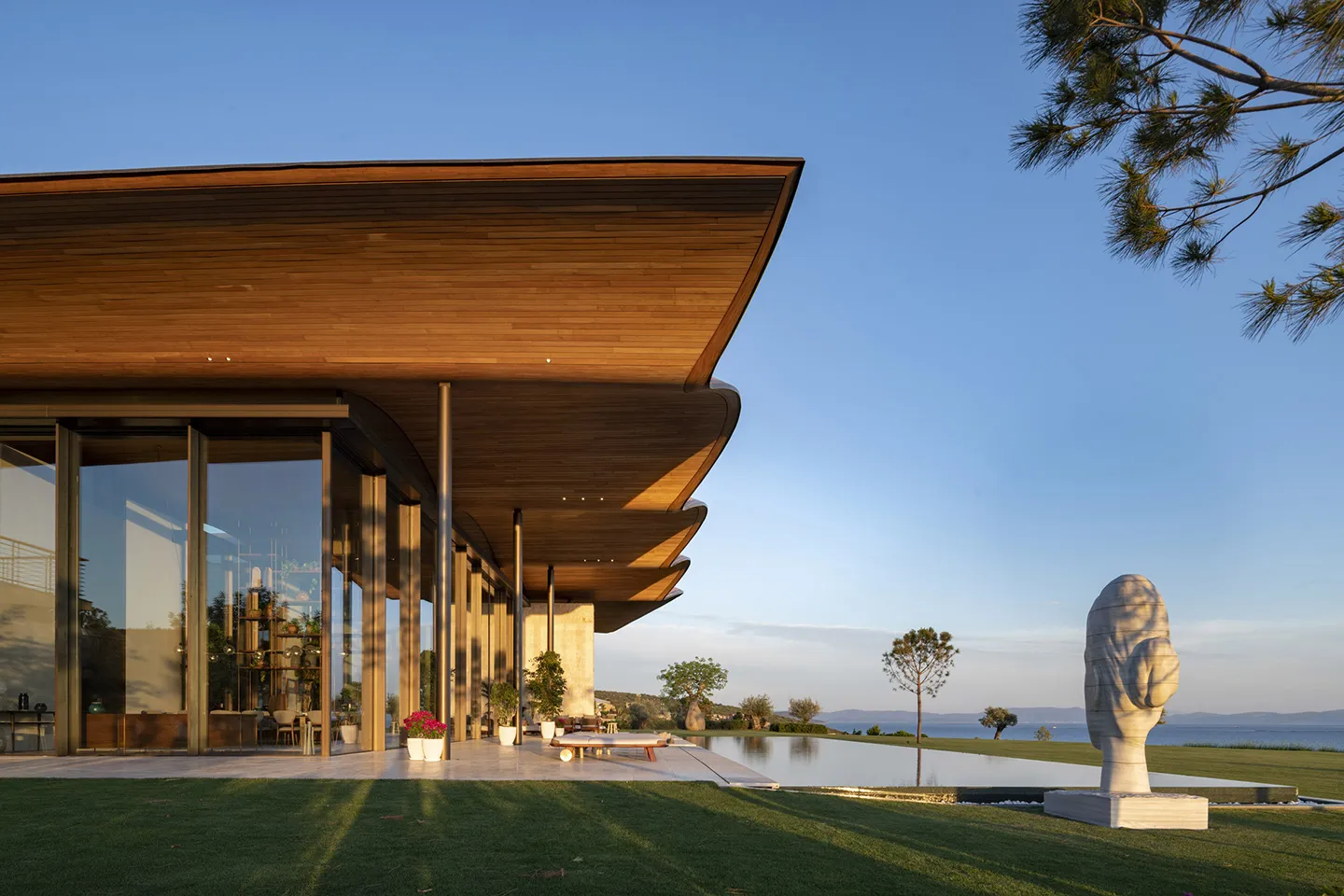Functionality and beauty are ageless. Some objects remain current and iconic over time, even after many years. Anniversaries thus become confirmation of a value that continues to speak to the present
7 seafront houses around the world

Espacio 18 Arquitectura, Casa del Sapo, Zapotengo, Mexico, 2021. Photo Onnis Luque
Terraces and large windows overlooking the sea, with natural materials and traditional techniques creating a bond with the landscape and nature: a selection of the finest contemporary villas on the coasts of seven countries
“Work, work, work, I prefer the sound of the sea,” wrote Dino Campana in his Canti Orfici (1913). The poet's words – later taken up by the sculptor Ugo Nespolo in one of his works – were a hymn to summer, idleness and direct contact with the sea. We also wish to celebrate the fine weather and summer holidays, and we’re doing so in our own way, with a selection of exclusive residences: seafront houses where all of us would love to spend at least a weekend.
The forms of houses typical of seaside towns have distinctive features, which absorb traditional techniques, natural materials and eclectic decorations, as well as creating a unique bond with their landscape settings. These projects are capable of rendering warm and tactile atmospheres, inviting us to live slowly.
“What unites and also differentiates them is a commitment to reflecting their owners’ individual personalities and lifestyles. Each is a canvas for creative expression which seeks to avoid seaside decorating clichés and aims instead to reflect and preserve meaningful stories about its local surroundings and the permanent community that lives there,” write Sarah Trounce, Kacie McGeary and Laura Box, authors of the book Life's a Beach. Homes, Retreats and Respite by the Sea, which analyzes the theme of beach houses. Through seven selected projects we will take a quick tour of the world – from Spain to Chile by way of Australia – to discover architecture, landscapes and unique stories.
La Casa del Sapo, Mexico
Inspired by the writings of David Thoreau, the architects at Espacio 18 Arquitectura created a villa modeled to follow the natural landscape.
Casa del Sapo's two concrete wings are oriented to watch the sunrise and sunset respectively, while the brick corridor between the two parts creates a direct visual connection with the sparkling waters of the Zapotengo coast in Mexico's Oaxaca. The designers have combined concrete, tiles, brick, wood and local stone to create a restrained and convivial atmosphere.

Espacio 18 Arquitectura, Casa del Sapo, Zapotengo, Mexico, 2021. Photo Onnis Luque
Active Materiality, Greece
The design concept by Potiropoulos + Partners draws on the mythology of Ancient Greece, in particular the myth of the Hydra of Lerna, in which the snake-like water monster was slain by Hercules, symbolizing the confrontation between man and nature.
The project seeks to blend in with the rocky landforms and combines the volumes as if they were part of the setting, looking like huge sculpted boulders.

Potiropoulos + Partners, Active Materiality, Porto Heli, Greece. © Potiropoulos + Partners
St. Andrews Beach Villa, Australia
It took 20 years of incremental modifications, adjustments and additions to complete the St. Andrews Beach Villa, designed by the Australian Woods Bagot practice. So it can hardly be said that it does not respond to the needs and complexities of the site in which it is set, a few kilometers from the center of Melbourne.
The volume of the residence is elementary: a box raised by a metal structure, with a panoramic space facing south-east towards the sea. Throughout the house we find a deliberate juxtaposition of eroded and weatherproof surfaces, of both banal and precious materials, to respond in complex ways to nature and its enchantments.

Woods Bagot, St. Andrews Beach Villa, Melbourne, Australia, 2019. Photo Trevor Mein
Holiday Home M, Denmark
“It’s bit like picking up a rock on the beach. This is how the cottage should be experienced. As a gentle addition, built on the premises of nature,” says Martin Schack, partner of GinnerupArkitekter, who designed this summer residence on a small Danish island.
Here the mimetic approach is clear. The natural materials of the cladding help to reduce its visual impact on the setting. The large windows are arranged so that nature is always brought into the interiors, from dawn to dusk.














